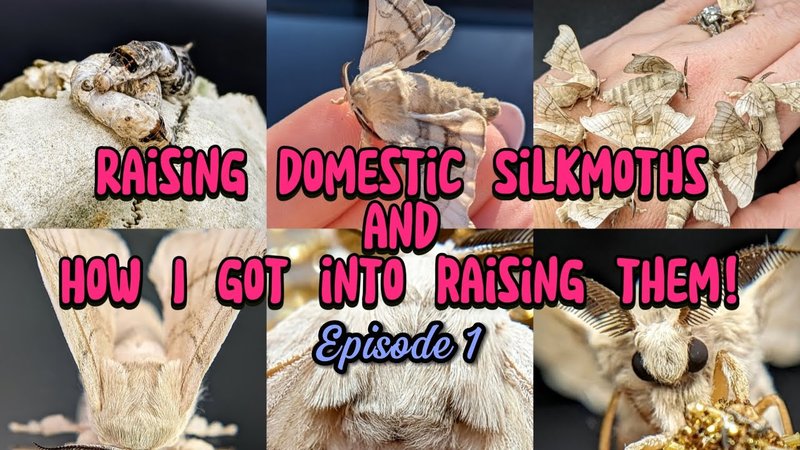
Here’s the thing: hornworms, primarily the larvae of the five-spotted hawk moth, are not just great for science projects; they’re also a vital food source for various reptiles and birds. This means you get to engage with nature and maybe even help out a hungry pet. I recently tried raising hornworms myself, and let me tell you, there’s something incredibly satisfying about watching them grow and change. So, let’s dive into how you can do the same!
Understanding Hornworms: What Are They?
Hornworms are the larval stage of the hawk moth, which is part of the Sphingidae family. They start out as tiny eggs, hatch into caterpillars, and eventually pupate into moths. Typically, they are bright green and have distinctive horn-like projections on their backs, which might intimidate other predators but provide them with a unique charm.
These caterpillars primarily feast on tomato, pepper, and tobacco plants, making them essential for several ecosystems. When raising hornworms for science projects, you’ll be observing their life cycle—one of the coolest parts about keeping these critters. Their transformation from caterpillar to moth can serve as a live demonstration of metamorphosis, a key concept in biology.
You might be wondering why you should choose hornworms specifically. Well, they grow rapidly and are relatively easy to care for, making them a perfect candidate for educational purposes. Plus, watching them grow from tiny eggs into large caterpillars can be pretty awe-inspiring.
Setting Up Your Hornworm Habitat
Creating a suitable habitat for your hornworms is crucial for their growth and health. You’ll want to start with a clean, ventilated container. A large jar or a plastic terrarium works well. Make sure it has a mesh top or holes for airflow—just like us, hornworms need fresh air!
Here’s what you’ll need for their habitat:
- A suitable container (like a terrarium or large jar)
- Fresh, non-sprayed leaves from plants they can eat (like tomato or pepper leaves)
- A thermometer to monitor the temperature
- A humidity gauge to ensure proper moisture levels
Aim for a temperature of about 70-80°F (21-27°C). Hornworms thrive in this warm environment. If your home gets chilly, you might consider using a heat mat. Keeping humidity around 50-70% helps them grow optimally. Too dry, and they may struggle or even die; too wet, and mold could become a problem.
Make sure to monitor their habitat daily. It’s easy to notice if they’re lacking moisture or if their food is running low. The more attentive you are, the healthier they’ll grow!
Feeding Your Hornworms
Hornworms are voracious eaters, which is a good thing! Their primary diet consists of fresh leaves from tomato and pepper plants. If you don’t have these plants at home, you can often find them at local nurseries or garden centers. Just make sure they’re free from pesticides, as these can harm your hornworms.
Here’s how to properly feed them:
1. **Replace old leaves regularly**: They tend to munch through their food quickly, so you’ll want to check their supply at least every other day.
2. **Use fresh leaves**: Avoid wilted or decaying leaves. Freshness is key to keeping them healthy.
3. **Wash your hands**: Before handling the plants, make sure to wash your hands to avoid transferring any unwanted chemicals.
The hornworms will grow significantly as they go through stages called instars. You might notice they consume more food as they get bigger. Each time they shed their skin (which is another fascinating process to observe), they’ll have more room to grow!
Observing the Life Cycle of Hornworms
One of the most exciting aspects of raising hornworms is witnessing their life cycle firsthand. Initially, you’ll have tiny eggs or caterpillars that grow rapidly and can reach up to 4 inches in length. This is where the fun really begins!
Once your hornworms have sufficiently grown, they will begin to pupate. At this stage, they may wander around their habitat looking for a suitable spot to transform into a chrysalis. This part of their life cycle can take a little time, so be patient.
After pupating, they will eventually emerge as adult moths. The whole process can take anywhere from a few weeks to a couple of months, depending on the temperature and conditions. It’s a fantastic opportunity to study the stages of metamorphosis and the changes they undergo.
Consider keeping a journal or a chart about their growth stages. Documenting their journey can make for a great project, and you might even surprise yourself with how much you learn.
Common Challenges When Raising Hornworms
While raising hornworms can be fulfilling, there are a few challenges you might face along the way. Understanding these potential issues can help you troubleshoot if problems arise.
Here are some common challenges:
- Overcrowding: If you start with several hornworms, they might get cramped. Make sure your container is large enough or consider transferring some to a new one.
- Health problems: If your hornworms are not growing or look unhealthy, check for stale food, inadequate humidity, or temperature fluctuations.
- Pest issues: Sometimes, small pests like mold can appear in their habitat. Keeping their living space clean helps prevent this.
Keeping a close eye on your hornworms and their habitat can help you notice these issues before they become serious. If you do encounter a problem, don’t get discouraged! Being hands-on with nature often comes with its own set of challenges, and troubleshooting is part of the learning process.
Sharing Your Findings: Science Projects and Beyond
Once your hornworms have gone through their life cycle, you’ll have a wealth of knowledge to share! Whether you’re preparing for a school project or simply want to share what you’ve learned, there are plenty of ways to showcase your experience.
A few ideas include:
– **Creating a presentation**: Use pictures and notes from your journal to summarize each stage of growth. You could even include a time-lapse video of their transformation!
– **Making a poster board**: Highlight key facts about hornworms and their role in nature. Visual aids can help make your project more engaging.
– **Conducting an experiment**: Compare two sets of hornworms—one group in a warm environment and one in a cooler space. Document how the temperature impacts their growth.
These activities can help solidify your understanding while engaging your audience. Remember, sharing your findings is just as important as the research itself.
Raising hornworms isn’t just about observing insects; it’s about diving into the wonders of nature, experiencing the thrill of transformation, and expanding your knowledge. It’s a hands-on project that can lead to greater appreciation for life cycles and ecosystems.
So, gather your supplies, set up a cozy habitat for your hornworms, and get ready for an educational adventure. The experience you gain will not just be beneficial for your science project but may spark a lifelong interest in biology and nature. Happy raising!

